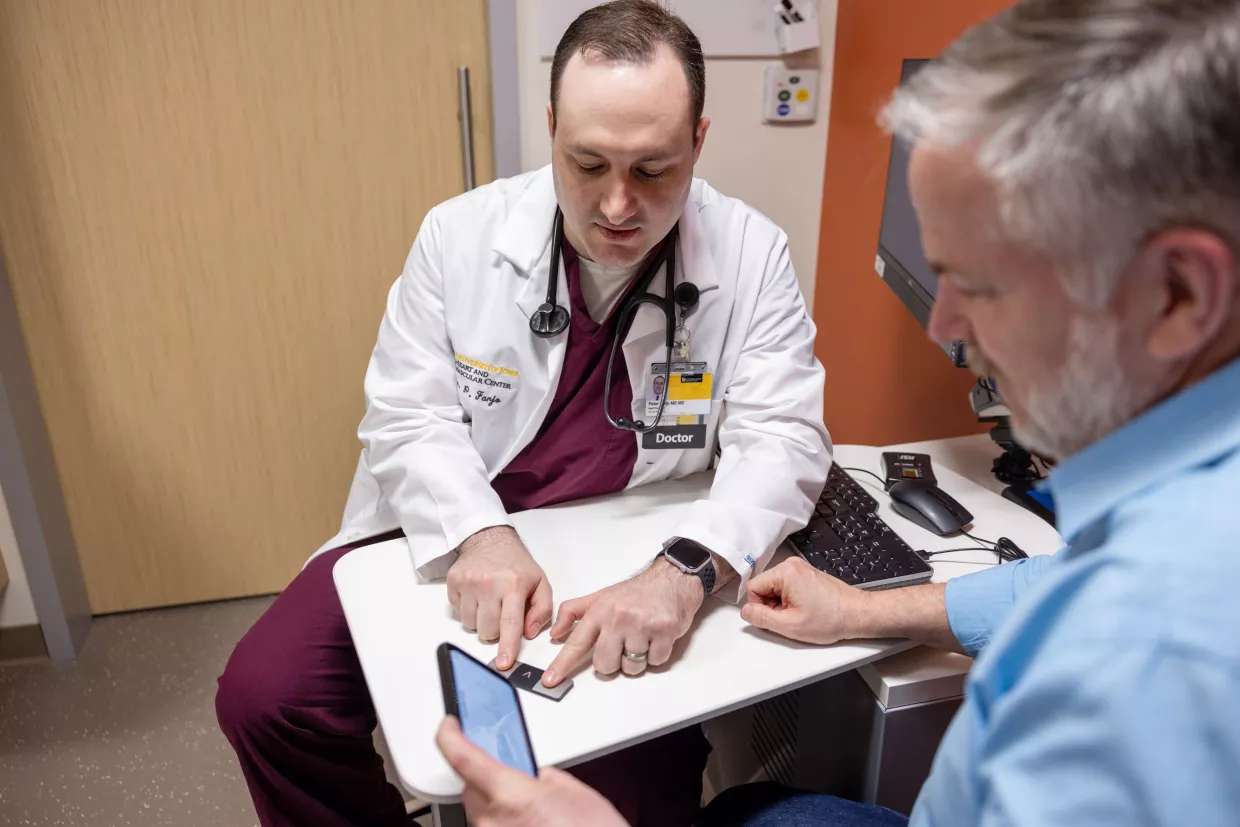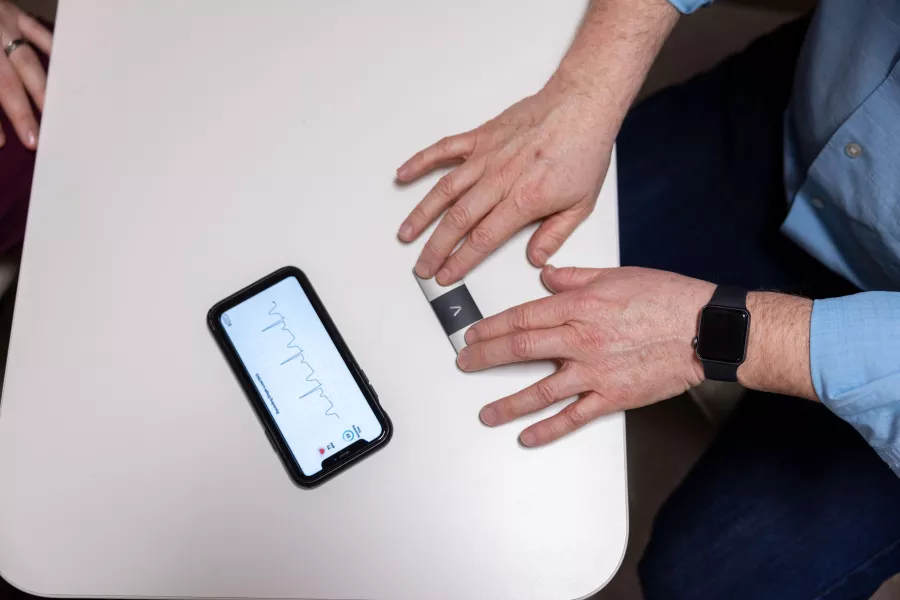Is your smartwatch telling you that you have Afib?
Wearable devices aren't just for tracking steps or checking the weather. They can also monitor heart rates and detect heart rhythm abnormalities, including Afib.

Smartwatches and wearable devices are gaining popularity as nifty gadgets to track steps or check weather updates and texts. They’re also wearable health aides that monitor heart rates—useful devices for people with atrial fibrillation (Afib) and other irregular heart rhythms.
By continuously monitoring heart rates, smartwatches can detect abnormalities such as a heart rate that is too high or too low. Some smartwatches also can provide an electrocardiogram (EKG) pattern that shows the heart’s electrical activity.
“The technology has advanced greatly in recent years and has gotten more accurate,” says cardiac electrophysiologist Peter D. Farjo, MD, MS.

Talk with our heart experts
Getting back on track with Afib starts with getting the right care.
Top benefits of smartwatches for patients with Afib
Farjo shares five of the most significant benefits of using smartwatches for patients with Afib:
- Smartwatches are easy to use. A smartwatch looks and wears like an ordinary watch—much easier than other heart rate monitors that patients must wear strapped to their chests for weeks at a time. Traditional heart monitors may be slightly more accurate and provide a little more detail about the heart’s electrical patterns, Farjo notes, but they're nowhere near as comfortable or convenient as a smartwatch.
- Smartwatches are on alert. Smartwatches don't simply monitor heart rates. They can also alert users of heart rhythm abnormalities, including Afib. Patients who receive Afib notifications from their smartwatch should contact their doctor, who can check the watch’s history for more information.
- Smartwatch technology can help correlate heart rate with symptoms. “One thing I stress to my patients about treating Afib or other common heart rhythm problems is how important symptoms are in guiding care,” Farjo says. With smartwatches, patients and their providers can see how their heart responds to different activities and interventions—foods, exercises, stressors, or new medications. Patients and physicians also can keep track of any Afib changes before and after procedures such as ablations.
- Patients can use the devices for different conditions. Smartwatches have a lot of functionality. For example, patients with Afib can use a smartwatch to assess symptoms and the percentage of time they're experiencing Afib episodes. They can use the watch to determine if they have Afib episodes that come and go on their own. If they have supraventricular tachycardia (SVT)—an arrhythmia where the heart suddenly beats much faster—a smartwatch can capture those episodes and correlate them with symptoms.
- Continuous monitoring provides continuous information. Patients with SVT might experience episodes that occur only a couple of times a year, which can be difficult to capture if they use a chest monitor for only two weeks at a time. By contrast, a smartwatch that continuously monitors heart rates can catch less frequent episodes of abnormal heart rhythms.
Accurate but not perfect
While smartwatches are accurate overall, they sometimes can underestimate fast heart rates, according to Farjo. Smartwatches also may signal irregular heart rates in patients who have just a few extra, and unharmful, beats—leading to undue worry for some patients.
Still, Farjo notes that more of his older patients are adopting smartwatches.
“Health is a big interest, so they’re embracing this technology,” Farjo says.